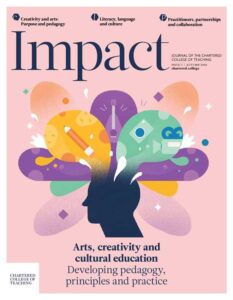Supporting wellbeing through the arts
Written by: Karen Paul

3 min read
With increasing pressures to achieve academic success through rigorous examination processes, I will look at the balance that students can achieve through engaging in an arts-based course, enrichment activity or project. This reflection considers the rationale for engaging students through creative opportunities and an enrichment programme, in conjunction with a broad curriculum offer.
Creative projects can enable students to communicate a range of emotions, to explore a range of disciplines and to collaborate with each other. The choral project led by Gareth Malone to support grieving students at the Kensington Aldridge Academy, the school sitting underneath the Grenfell Tower and impacted by the loss of five students, was watched by many in the BBC series The Choir (2019). We witnessed the significant impact on young people of expressing their emotions, fears and hope for the future through song, rap and composition. The power of this project was in the collaboration of students w
Join us or sign in now to view the rest of this page
You're viewing this site as a guest, which only allows you to view a limited amount of content.
To view this page and get access to all our resources, join the Chartered College of Teaching (it's free for trainee teachers and half price for ECTs) or log in if you're already a member.
This article was published in September 2019 and reflects the terminology and understanding of research and evidence in use at the time. Some terms and conclusions may no longer align with current standards. We encourage readers to approach the content with an understanding of this context.
0
0
votes
Please Rate this content
Please login to comment
0 Comments
Oldest
Newest
Most Voted
Inline Feedbacks
View all comments










